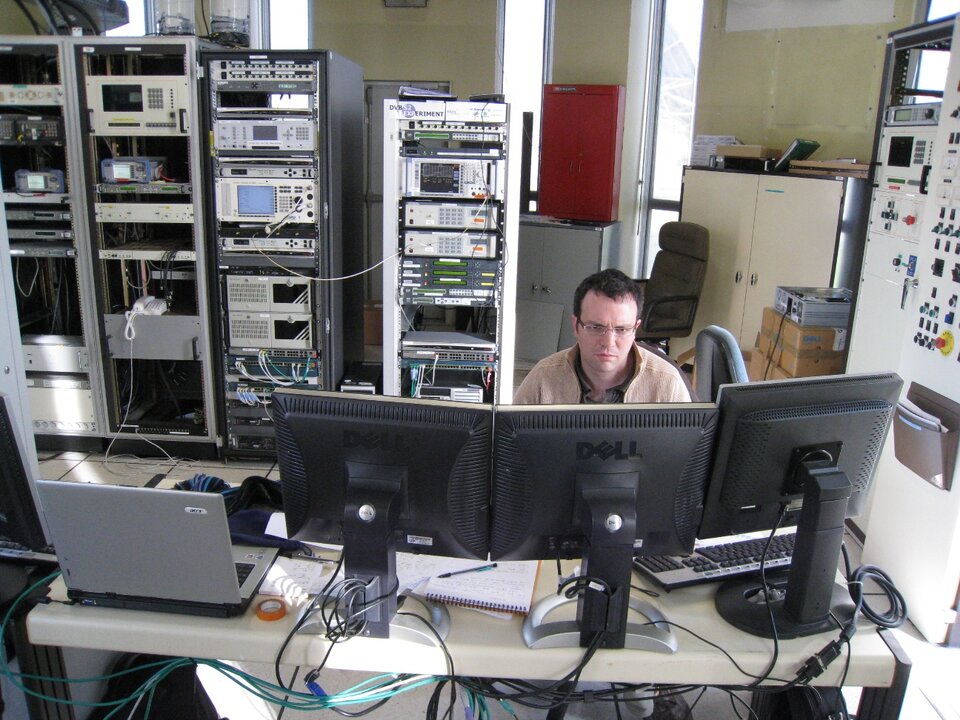Picture perfect with DVB-S2
Thanks to ESA’s help, we can all enjoy the delights of high-definition television via satellite. Heavy rain, however, dampens our viewing experience. This frustrating situation may soon be history.
A series of tests conducted via ESA’s telecommunications programme on ‘DVB-S2’ (Digital Video Broadcast by satellite standard version 2) signals prove there is indeed a solution. For the viewer, this means there is no longer the risk of missing the best part of a film or the winning goal.
It also means that more data can be transmitted with the same satellite power, resulting in even more services for users at a more affordable cost.
Introduced in 2003, DVB-S2 has revolutionised the way we receive digital television and data services. It meets the growing demand for more television channels in high definition as well as the steady growth of Internet communications, both of which require more bandwidth. DVB-S2 fulfils the need to transmit at higher frequencies to accommodate bandwidth needs.
However, higher frequencies are affected by heavy rainfall. Yet congestion at lower frequencies means the use of telecommunications satellites broadcasting in higher frequencies is destined to become more common. It’s a vicious cycle.

The success of ESA’s DVB-S2 tests provides a solution. A base layer consisting of the standard-definition (SD) video stream is complemented with extra information that allows a high-definition (HD) picture to be formed. The information transmitted in the SD layer is reused.
The SD layer is given stronger protection against fading, thanks to the combination of these technologies. This means that transmissions can elegantly continue, albeit with a lower resolution, even during heavy rainfall.
Today, television viewers with older set-top boxes cannot receive the new DVB-S2 standard, so broadcasters often transmit the same content in SD and HD. Transmitting the same thing twice is not optimal from the broadcasters’ point of view because it demands more satellite capacity. It would become a thing of the past, according to these test results.
This particular testing on the DVB-S2 standard was conducted by EADS Astrium (FR) and Fraunhofer HHI (DE) with support of ESA experts. For more information on the entire DVB-S2 experiment, see the links in the column to the right.




